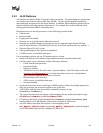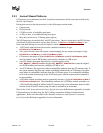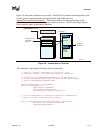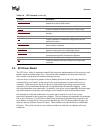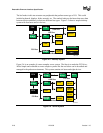
Extensible Firmware Interface Specification
2-10 12/01/02 Version 1.10
• An ACPI Memory Op-region must inherit cacheability attributes from the EFI memory map. If
the system memory map does not contain cacheability attributes, the ACPI Memory Op-region
must inherit its cacheability attributes from the ACPI name space. If no cacheability attributes
exist in the system memory map or the ACPI name space, then the region must be assumed to
be noncacheable.
• ACPI tables loaded at runtime must be contained in memory of type EfiACPIMemoryNVS or
EfiFirmareReserved. The cacheability attributes for ACPI tables loaded at runtime (via
ACPI LoadTable) should be defined in the EFI memory map. If no information about the table
location exists in the EFI memory map, the table is assumed to be noncached.
2.3.2.1 Handoff State
When an IA-32 EFI OS is loaded, the system firmware hands off control to the OS in flat 32-bit
mode. All descriptors are set to their 4 GB limits so that all of memory is accessible from all
segments. The address of the IDT is not defined and thus it cannot be manipulated directly during
boot services.
Figure 2-2 shows the stack after AddressOfEntryPoint in the image’s PE32+ header has been
called on IA-32 systems. All EFI image entry points take two parameters. These are the image
handle of the EFI image, and a pointer to the EFI System Table.
OM13145
Stack Location
EFI_SYSTEM_TABLE *
EFI_HANDLE
<return address>
ESP + 8
ESP + 4
ESP
Figure 2-2. Stack after AddressOfEntryPoint Called, IA-32










